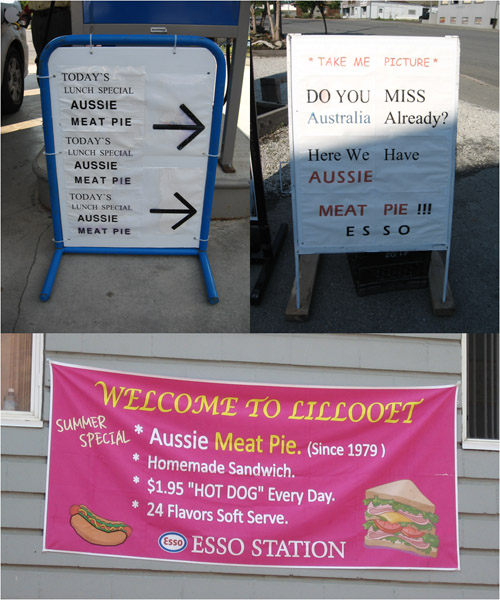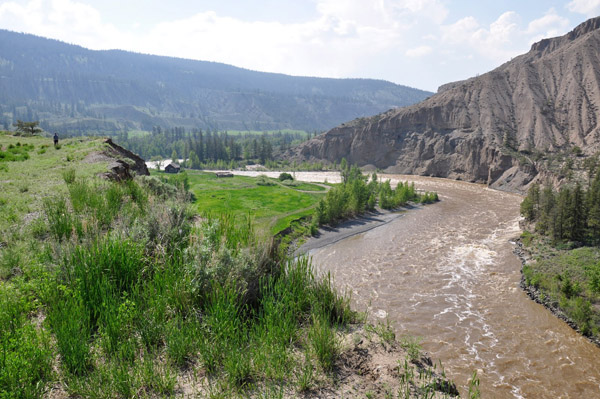It’s a little bit country
Touring the Fraser Canyon is as much a cultural experience as a scientific one. Something about wide open spaces creates a different sort of atmosphere than what you’re likely to find in the city. We wouldn’t necessarily notice this difference from the comfort of our van driving between our sampling sites. But the towns we visit that provide food and shelter along the way each offer their own ambiance. In most cases, this involves some mix of frontier and aboriginal flair.

Do you miss Australia already?
En route between Lillooet and our sampling site on the Chilcotin River today, we stopped for breakfast at the Hat Creek Ranch, where the proprietors of the restaurant and (apparently) historic ranch have gone to great lengths to emphasize the western attributes of the site’s surroundings and roots. Not leaving out a single detail, they even had “Rawhide” playing in the background. Before moving on, we were reunited with the busload of Australian tourists who followed us to breakfast just yesterday in Lillooet (where they appear to have made quite an impression, see first photo). Also spotted on the road today were a rodeo in progress and countless pastures of grazing cattle, and all before Williams Lake (the rodeo capital of B.C.)!
The real highlight of the day was driving through the Chilcotin canyon. The area looks completely different from what we saw on our last two visits (summer 2009 and fall 2010). Instead of sparse bunchgrass dotting the vast sandy-brown landscape with the milky blue-gray Chilcotin River running through the middle, we found the hills dusted with green grass and the Chilcotin a muddy brown color. After sampling, we paused to admire the beautiful landscape (see second photo) before continuing on to Quesnel.

Chilcotin canyon
The Chilcotin has always been our nemesis when it comes to filtering out our precious particles. True to form, the filters we use to collect water samples on-site clogged before we could fill all our bottles. Then back in the hotel we discovered that our pressurized filtration units could only filter about half as much water as they did for previous stations before clogging. But given the stark visual contrast in the Chilcotin between our visits, it will certainly be worth it to compare the chemical nature of these particles with those collected at different times of year! The water passing through the filters is also visibly colored, so we hope to save some for lignin concentration measurements as well.
After just one night in Quesnel, we will head to Prince George, which will serve as a “base camp” for most of our remaining stations. Stay tuned for more exciting tributaries, a new team member, and more pictures of sunshine (fingers crossed)!
